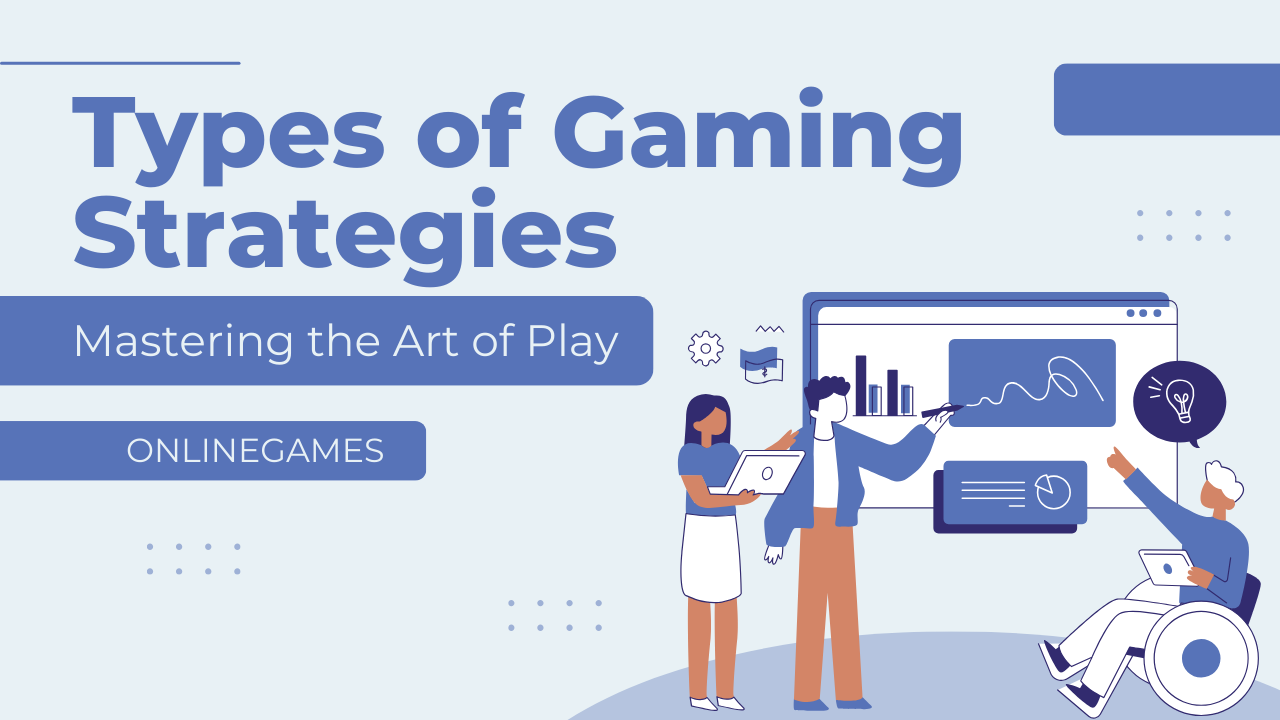In the dynamic world of gaming, strategies play a pivotal role in shaping success, whether you’re navigating a virtual battlefield or unravelling complex puzzles. Understanding and employing the right strategies can significantly enhance your gameplay experience and lead to victories. This comprehensive guide explores various types of gaming strategies across different genres, providing insights into their applications, benefits, and examples.
1. Tactical Strategies
Quick Decision-Making
Tactical strategies focus on short-term decisions and actions aimed at gaining immediate advantages in the game. These strategies are essential in fast-paced environments where rapid response and adaptability are crucial.
- Immediate Impact: Tactical decisions aim to achieve instant results, such as seizing control points or outmanoeuvring opponents.
- Dynamic Adjustments: Players must quickly adapt to changing situations and make decisions on the fly.
Examples of Tactical Strategies
- First-Person Shooters (FPS): Employing strategies like flanking, setting traps, or coordinating timed assaults to gain tactical superiority.
- Real-Time Strategy (RTS): Using quick resource management, unit positioning, and timed attacks to overwhelm opponents strategically.
2. Strategic Strategies
Long-Term Planning
Strategic strategies involve planning and decision-making focused on achieving overarching objectives over extended periods. These strategies require foresight, patience, and the ability to anticipate and counter opponents’ moves.
- Comprehensive Planning: Developing a roadmap that includes resource allocation, long-term goals, and adaptive tactics.
- Risk Assessment: Calculating risks and rewards to maximize long-term success and minimize vulnerabilities.
Examples of Strategic Strategies
- Turn-Based Strategy (TBS): Planning unit movements, city expansions, and diplomatic relations to outlast and outmanoeuvre rivals.
- Empire-Building Games: Managing economic growth, military expansion, and technological advancements to dominate competitors.
3. Economic Strategies
Resource Management
Economic strategies focus on efficiently managing resources to sustain growth and gain advantages over opponents. These strategies are prevalent in games where resource allocation and production are critical to success.
- Efficient Allocation: Balancing resource acquisition, production, and consumption to maintain economic stability and growth.
- Market Influence: Exploiting market fluctuations and resource scarcity to gain economic dominance.
Examples of Economic Strategies
- Simulation Games: Developing industries, managing supply chains, and optimizing production to generate wealth and expand influence.
- Role-Playing Games (RPG): Using resource gathering, crafting, and trading to enhance character capabilities and acquire rare items.
4. Offensive Strategies
Direct Confrontation
Offensive strategies prioritize aggressive actions aimed at overwhelming opponents through force and confrontation. These strategies require boldness, assertiveness, and the ability to capitalize on openings.
- Forceful Engagement: Launching coordinated attacks, exploiting weaknesses, and pressuring opponents into defensive positions.
- Decisive Actions: Striking swiftly and decisively to disrupt opponents’ strategies and control critical areas.
Examples of Offensive Strategies
- Combat Games: Employing aggressive combat techniques, combos, and offensive manoeuvres to overpower opponents in one-on-one or team-based battles.
- Siege Games: Using siege engines, tactics, and troop deployments to breach defences and capture enemy strongholds.
5. Defensive Strategies
Protection and Resilience
Defensive strategies prioritize fortification, resilience, and strategic positioning to withstand enemy assaults and maintain control over key territories. These strategies emphasize patience, vigilance, and the ability to endure prolonged engagements.
- Fortified Positions: Building defences, establishing chokepoints, and leveraging terrain advantages to repel attacks.
- Sustainable Defense: Maintaining resource reserves, defensive structures, and unit reserves to outlast adversaries.
Examples of Defensive Strategies
- Tower Defense Games: Strategically placing defensive towers, upgrading defences, and deploying countermeasures to fend off waves of enemies.
- Strategy Games: Using defensive formations, tactics, and counterattacks to withstand enemy offensives and preserve strategic objectives.
6. Cooperative Strategies
Collaborative Play
Cooperative strategies involve teamwork, coordination, and synergy among players to achieve shared goals and objectives. These strategies emphasize communication, trust, and role specialization within teams.
- Team Synergy: Combining unique strengths and abilities to create powerful synergies and maximize team effectiveness.
- Role Coordination: Assigning roles such as tank, healer, and damage dealer to optimize team dynamics and strategic execution.
Examples of Cooperative Strategies
- Multiplayer Online Battle Arenas (MOBAs): Coordinating hero selections, lane assignments, and team fights to control map objectives and defeat opposing teams.
- MMORPG Raids: Organizing raid groups, assigning tasks, and executing synchronized tactics to overcome powerful bosses and earn valuable rewards.
7. Stealth Strategies
Subterfuge and Infiltration
Stealth strategies prioritize covert actions, deception, and evasion to achieve objectives while avoiding confrontation. These strategies require patience, cunning, and the ability to exploit enemy vulnerabilities.
- Infiltration Tactics: Sneaking past enemies, using disguises, and exploiting environmental cover to reach objectives undetected.
- Ambush and Surprise: Setting traps, staging ambushes, and surprising opponents with unexpected attacks.
Examples of Stealth Strategies
- Stealth Action Games: Utilizing stealth mechanics, gadgets, and silent takedowns to navigate enemy territory and complete missions without detection.
- Tactical Espionage Games: Employing espionage tactics, surveillance, and sabotage to gather intelligence and undermine enemy operations.
8. Psychological Strategies
Mind Games and Manipulation
Psychological strategies involve manipulating opponents’ perceptions, emotions, and decision-making processes to gain advantages and achieve victory. These strategies require insight, adaptability, and the ability to anticipate and exploit psychological vulnerabilities.
- Bluffing and Deception: Misleading opponents, concealing intentions, and creating false expectations to provoke mistakes and overreactions.
- Psychological Pressure: Applying psychological pressure, intimidation tactics, and mind games to unsettle opponents and disrupt their strategies.
Examples of Psychological Strategies
- Card Games: Using bluffing, card counting, and reading opponents’ tells to manipulate outcomes and gain a competitive edge in games like poker.
- Strategy Board Games: Employing feints, misinformation, and strategic withdrawals to deceive opponents and gain strategic advantages.
Mastering different types of gaming strategies is essential for success in various game genres, from tactical shooters to expansive strategy simulations. By understanding and effectively employing these strategies, players can enhance their gameplay experience, achieve goals, and outmanoeuvre with skill and precision. Whether you prefer confrontation, covert operations, or collaborative teamwork, strategic thinking and execution are key to mastering the art of play in the dynamic world of gaming.










